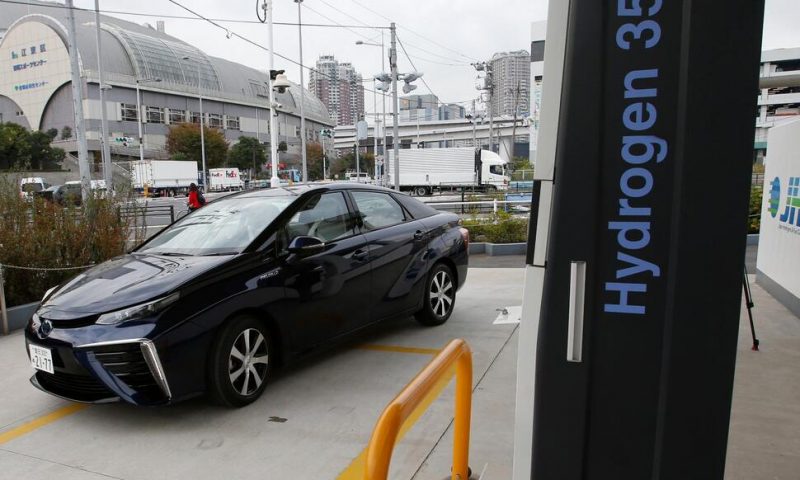The governors of four Rocky Mountain states say they will cooperate on developing ways to make hydrogen more available and useful as clean-burning fuel for cars, trucks and trains.
CHEYENNE, Wyo. — Four Rocky Mountain states will cooperate on developing ways to make the most abundant element in the universe, hydrogen, more available and useful as clean-burning fuel for cars, trucks and trains, the states’ governors announced Thursday.
Colorado, New Mexico, Utah and Wyoming will plan a “hydrogen hub” to be built somewhere in the region, drawing from $8 billion in recently approved federal infrastructure funding for four or more such regional hubs in the U.S.
“This coalition represents a shared vision for the future of hydrogen in the Mountain West region,” Wyoming Gov. Mark Gordon said in a joint statement with governors Jared Polis of Colorado, Michelle Lujan Grisham of New Mexico and Spencer Cox of Utah.
The Western Inter-State Hydrogen Hub will have facilities in all four states under plans to be submitted to the U.S. Department of Energy, according to an agreement signed Wednesday.
Goals will include economic development and the “latest science, research and technology for cost-effective generation, transportation, and use of clean hydrogen,” the states’ agreement said.
Hydrogen has long been eyed as an abundant, clean fuel. Companies including major auto manufacturers have been developing hydrogen-fueled cars, trucks, buses and trains.
Hydrogen can be derived from water using an electric current and when burned emits only water vapor as a byproduct. The fuel could theoretically reduce greenhouse emissions and air pollution, depending on how it’s obtained.
As with electric vehicles, however, hydrogen’s potential has been limited by infrastructure. Lack of fueling stations limits the market for hydrogen-fueled vehicles. Few hydrogen-fueled vehicles limits investment in producing and moving hydrogen.
In New Mexico, Lujan Grisham, a Democrat, has amid criticism pushed aggressively to attract private investment and federal dollars for hydrogen production and distribution.
“Hydrogen is coming everywhere in the country,” Lujan Grisham said last week at the close of the state’s annual legislative session. “My job is to make sure we have the right safeguards and effort.”
Critics point out that as it’s now produced, hydrogen isn’t green, carbon-free or unlimited. Currently nearly all hydrogen commercially produced in the U.S. comes not from water but natural gas, according to the U.S. Energy Information Administration.
While advocates say using fossil fuels to produce hydrogen now can help to develop a clean industry later, environmentalists are skeptical.
“It’s essentially a push for expanded oil and gas development. More oil and gas development is completely at odds with the need to confront the climate crisis and drastically reduce our dependence on fossil fuels,” Jeremy Nichols with the Santa Fe, New Mexico-based environmental group WildEarth Guardians said by email.
Colorado, New Mexico and Wyoming rank seventh, eighth and ninth, respectively, for U.S. onshore gas production. Utah also is significant gas-producing state, according to the Energy Information Administration.

